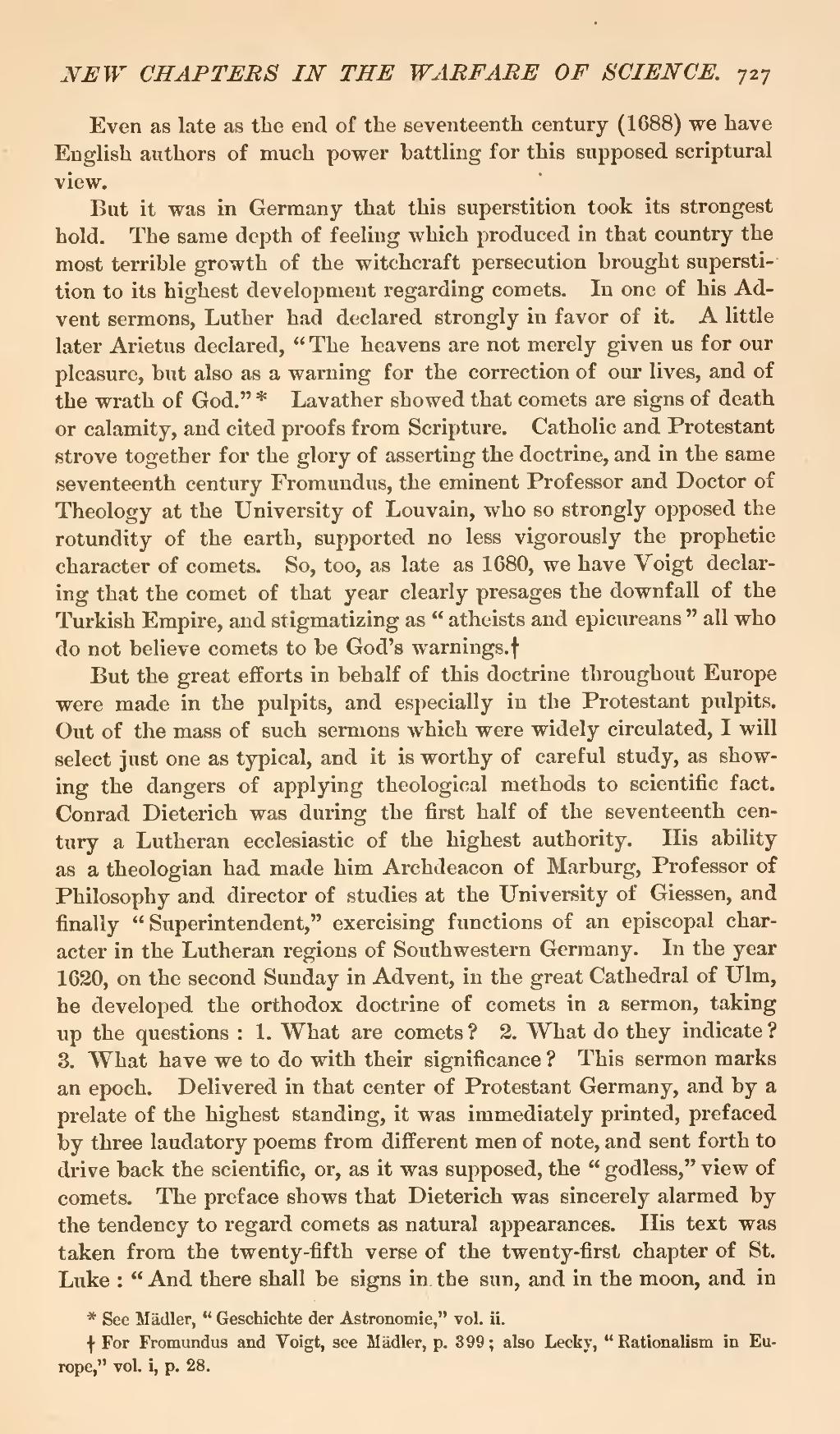Even as late as the end of the seventeenth century (1688) we have English authors of much power battling for this supposed scriptural view.
But it was in Germany that this superstition took its strongest hold. The same depth of feeling which produced in that country the most terrible growth of the witchcraft persecution brought superstition to its highest development regarding comets. In one of his Advent sermons, Luther had declared strongly in favor of it. A little later Arietus declared, "The heavens are not merely given us for our pleasure, but also as a warning for the correction of our lives, and of the wrath of God."[1] Lavather showed that comets are signs of death or calamity, and cited proofs from Scripture. Catholic and Protestant strove together for the glory of asserting the doctrine, and in the same seventeenth century Fromundus, the eminent Professor and Doctor of Theology at the University of Louvain, who so strongly opposed the rotundity of the earth, supported no less vigorously the prophetic character of comets. So, too, as late as 1680, we have Voigt declaring that the comet of that year clearly presages the downfall of the Turkish Empire, and stigmatizing as "atheists and epicureans" all who do not believe comets to be God's warnings.[2]
But the great efforts in behalf of this doctrine throughout Europe were made in the pulpits, and especially in the Protestant pulpits. Out of the mass of such sermons which were widely circulated, I will select just one as typical, and it is worthy of careful study, as showing the dangers of applying theological methods to scientific fact. Conrad Dieterich was during the first half of the seventeenth century a Lutheran ecclesiastic of the highest authority. His ability as a theologian had made him Archdeacon of Marburg, Professor of Philosophy and director of studies at the University of Giessen, and finally "Superintendent," exercising functions of an episcopal character in the Lutheran regions of Southwestern Germany. In the year 1620, on the second Sunday in Advent, in the great Cathedral of Ulm, he developed the orthodox doctrine of comets in a sermon, taking up the questions: 1. What are comets? 2. What do they indicate? 3. What have we to do with their significance? This sermon marks an epoch. Delivered in that center of Protestant Germany, and by a prelate of the highest standing, it was immediately printed, prefaced by three laudatory poems from different men of note, and sent forth to drive back the scientific, or, as it was supposed, the "godless," view of comets. The preface shows that Dieterich was sincerely alarmed by the tendency to regard comets as natural appearances. His text was taken from the twenty-fifth verse of the twenty-first chapter of St. Luke: "And there shall be signs in. the sun, and in the moon, and in

